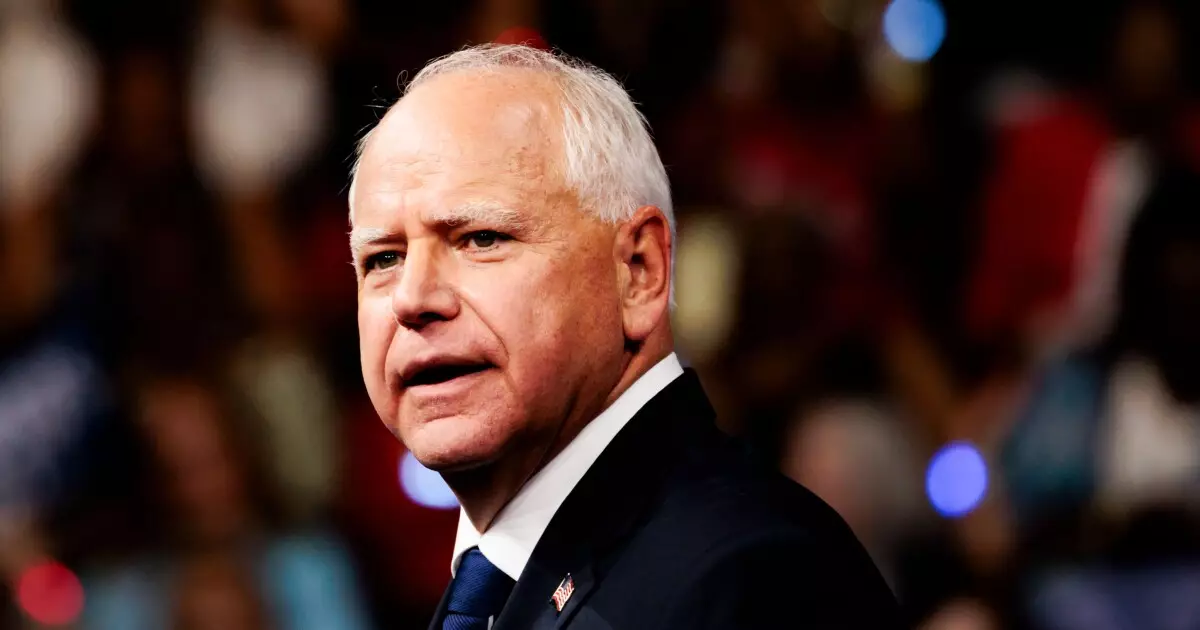Tim Walz, the governor of Minnesota, has been at the forefront of proposing major investments in the state’s infrastructure. His $3.3 billion bonding bill, which aimed to address various infrastructure needs, was considered to be the largest in the state’s history. Additionally, earlier in the year, he proposed a $1 billion infrastructure package, showcasing his commitment to improving Minnesota’s overall infrastructure.
As a veteran of partisan battles, Tim Walz has honed his pragmatism over the years. His experience as a candidate for national office and his tenure as a representative for Minnesota’s 1st district have provided him with valuable knowledge of Washington. This background has allowed him to navigate the intricacies of governance and infrastructure development effectively.
Over time, Tim Walz’s approach to governance has evolved to focus on addressing key infrastructure challenges that have been overlooked historically. His progressive proposals aim to fix infrastructure issues that have been neglected, showcasing his commitment to advancing equity and environmental stewardship in Minnesota.
Tim Walz’s $3.3 billion bonding proposal involved a combination of general obligation bonds and other funding sources such as appropriation bonds, trunk highway bonds, user-financed bonds, and general fund and trunk highway cash. The goals of the proposal were clear: boost infrastructure asset preservation, advance equity and environmental stewardship, support housing, combat homelessness, and preserve roads, bridges, and water systems.
Despite the Democratic-Farmer-Labor party’s control of the state Senate in 2022, Tim Walz faced challenges in passing his bonding bills. With bond bills requiring a 60% supermajority that the Democrats lacked, Walz needed bipartisan support to push his infrastructure measures through the legislature.
In a significant milestone, the legislature passed a nearly $2.6 billion infrastructure bill in May 2023, marking the largest infrastructure measure in Minnesota’s history. However, not all of Walz’s proposals made it through the legislative process, highlighting the challenges of garnering support for ambitious infrastructure projects.
Minnesota’s financial stability and commitment to structural budgetary balance have earned the state triple-A ratings from Fitch Ratings, Moody’s Ratings, and S&P Global Ratings. This recognition is a testament to Minnesota’s robust financial management and its tailored revenue structure designed to capture economic growth.
Despite notable achievements in infrastructure investment, partisan wrangling and discord persist in Minnesota’s political landscape. Concerns remain about the impact of large omnibus bills and the overall social climate of the state, reflecting ongoing tensions between political parties.
Some members of the opposition have criticized Tim Walz’s leadership and approach to infrastructure investment. Claims of chaotic legislative sessions and disregard for the American family have been raised, highlighting the contentious nature of political discourse in Minnesota.
As Tim Walz continues to champion infrastructure investment and governance in Minnesota, the road ahead is filled with challenges and opportunities. Balancing the needs of various stakeholders and navigating the complexities of bipartisan cooperation will be essential in driving meaningful change and progress in the state.
Tim Walz’s tenure as governor of Minnesota has been marked by ambitious infrastructure proposals and a commitment to addressing key challenges facing the state. While facing obstacles and criticism along the way, his pragmatic approach and dedication to improving Minnesota’s infrastructure have laid the groundwork for future progress and development.

